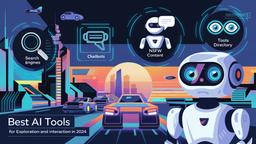Open-source humanoid robots Introduction
Open-source humanoid robots are fully-featured, 3D-printable robotic platforms that anyone can build and customize for research, education, or personal projects.
View MoreWhat is Open-source humanoid robots
Open-source humanoid robots are robotic systems with human-like bodies and capabilities that are designed to be freely built, modified, and improved by anyone. Projects like K-Scale Labs' Stompy, InMoov, and Poppy provide open designs, software, and instructions for creating humanoid robots using 3D printing and off-the-shelf components. These robots typically stand 4-5 feet tall, have articulated limbs and grippers, and can be programmed to perform a variety of tasks. The open-source nature allows researchers, hobbyists, and educators to access advanced robotics technology at a fraction of the cost of commercial systems.
How does Open-source humanoid robots work?
Open-source humanoid robots are built using 3D-printed parts for the body and structural components, combined with servos, motors, and electronic components for movement and control. The designs are modular, allowing individual parts to be easily replaced or upgraded. They are typically controlled by open-source software frameworks like ROS (Robot Operating System) that handle motion planning, sensor integration, and high-level behaviors. Users can program the robots using languages like Python to develop custom applications. Some platforms also incorporate AI and machine learning capabilities for more advanced autonomy and interaction. The open nature of the designs means that users can modify both hardware and software to suit their specific needs, whether for research, education, or creative projects.
Benefits of Open-source humanoid robots
Open-source humanoid robots offer several key benefits. They democratize access to advanced robotics technology, allowing individuals and small teams to work with humanoid platforms that were previously only available to large research labs or companies. The low cost and ability to 3D print components makes iterative design and experimentation much more accessible. For education, these robots provide hands-on learning opportunities in mechatronics, programming, and AI. In research, the open platforms enable rapid prototyping of new algorithms and applications. The collaborative nature of open-source also accelerates innovation, as improvements can be shared across the global robotics community. Overall, open-source humanoids are driving wider engagement with robotics and accelerating the development of more capable and affordable robotic systems.
Popular Articles

Best AI Tools for Exploration and Interaction in 2024: Search Engines, Chatbots, NSFW Content, and Comprehensive Directories
Dec 11, 2024

12 Days of OpenAI Content Update 2024
Dec 11, 2024

Top 8 AI Tools Directory in December 2024
Dec 11, 2024

Elon Musk's X Introduces Grok Aurora: A New AI Image Generator
Dec 10, 2024
View More







